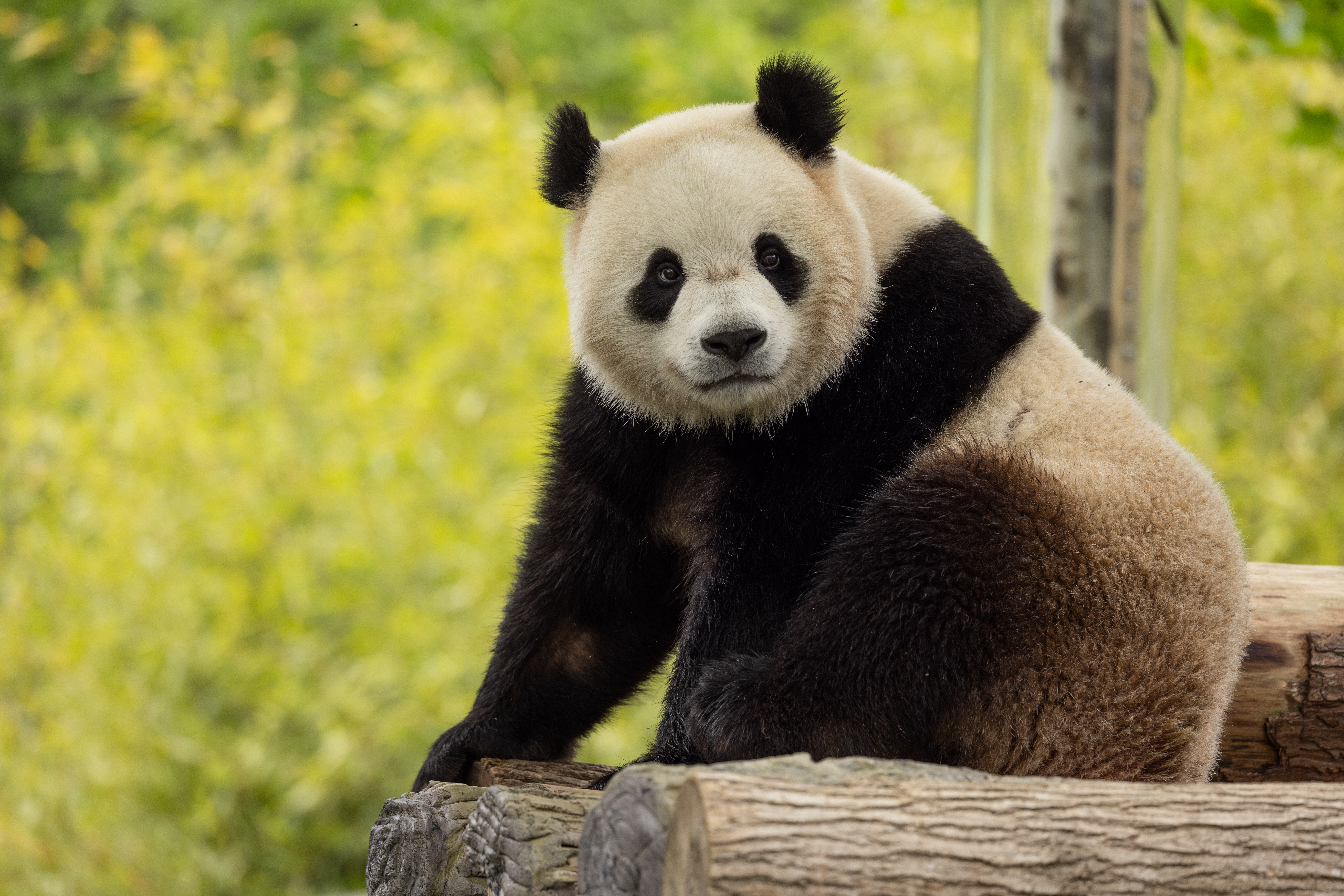Male giant panda Bao Li in his habitat at Shenshuping Base in Wolong, China, May 16.
David Rubenstein Donates $10 Million to Smithsonian’s National Zoo and Conservation Biology Institute’s Giant Panda Program

Male giant panda Bao Li in his habitat at Shenshuping Base in Wolong, China, May 16. Roshan Patel, Smithsonian’s National Zoo and Conservation Biology Institute.
Inspired by the launch of the Smithsonian Campaign for Our Shared Future last Friday, David M. Rubenstein, co-founder and co-chairman of The Carlyle Group, has pledged $10 million toward the Smithsonian’s National Zoo and Conservation Biology Institute’s (NZCBI) $25 million campaign to fund the giant panda conservation program.
“David Rubenstein’s long-term support has transformed our giant panda program and, in turn, the future of this magnificent species and its native habitat,” said Brandie Smith, NZCBI’s John and Adrienne Mars Director. “David understands the work to save giant pandas is larger than one person, one organization or one nation. We are deeply appreciative of his commitment to preserving biodiversity.”
Including this new gift, Rubenstein has donated a total of $22 million in support of NZCBI’s giant panda conservation program since 2011, and an additional $2 million in 2013 to support Asian elephant research. As in previous years, Rubenstein’s gift will support efforts by Smithsonian and Chinese partners to innovate new techniques and pursue research to contribute to the health and welfare of giant pandas in human care and expand work critical to the conservation of giant pandas in the wild, including research on restoring native habitat and assessing impacts of climate change.
“The National Zoo’s panda program brings joy to millions of people today as it does the important work of understanding and preserving these magnificent creatures for generations to come,” Rubenstein said. “I am pleased to renew my support of this consequential program, a part of the larger Smithsonian campaign. The long-standing partnership between the Smithsonian and the China Wildlife Conservation Association has led to scientific breakthroughs to better understand what pandas need to thrive. These advances help the pandas as well as other rare and endangered animals in human care and in the wild.”
Since the first pair arrived at the Zoo in 1972, giant pandas have been one of the biggest attractions at NZCBI, which now draws an estimated 2 million visitors annually. For more than five decades, NZCBI has created and maintained one of the world’s foremost giant panda conservation programs, helping move the panda from “endangered” to “vulnerable” on the global list of species at risk of extinction.
On May 29, NZCBI announced a new 10-year cooperative giant panda research and breeding agreement signed by Smith and Wu Minglu, secretary general of the China Wildlife Conservation Association (CWCA). The Zoo will welcome a new pair of giant pandas, 3-year-old male Bao Li [BOW-lee] and 3-year-old female Qing Bao [ching-BOW], by the end of the year. The pair received a recommendation to breed based on their genetics, health and temperament, among other factors.
The terms of the new agreement stipulate NZCBI and partners in China will conduct cooperative research projects in China and at the Zoo in Washington, D.C. In line with all zoos outside of China that care for and exhibit giant pandas, NZCBI will pay a $1 million annual fee to the CWCA in support of these projects. Federal funding covers NZCBI’s essential animal care expenses such as food, medicine, animal care staff and facilities maintenance. The remainder of NZCBI’s operating budget, including the giant panda conservation program, comes from the support of Zoo visitors, members and donors.
To follow the latest news about NZCBI’s panda program, visit the Zoo’s website, subscribe to its e-newsletter and follow #DCPandas on Facebook, Instagram, YouTube and X.
About the Smithsonian’s National Zoo and Conservation Biology Institute
The Smithsonian’s National Zoo and Conservation Biology Institute (NZCBI) leads the Smithsonian’s global effort to save species, better understand ecosystems and train future generations of conservationists. Its two campuses are home to some of the world’s most critically endangered species. Always free of charge, the Zoo’s 163-acre park in the heart of Washington, D.C., features 2,200 animals representing 400 species and is a popular destination for children and families. At the Conservation Biology Institute’s 3,200-acre campus in Virginia, breeding and veterinary research on 264 animals representing 20 species provide critical data for the management of animals in human care and valuable insights for conservation of wild populations. NZCBI’s more than 300 staff and scientists work in Washington, D.C., Virginia and with partners at field sites across the United States and in more than 30 countries to save wildlife, collaborate with communities and conserve native habitats. NZCBI is a long-standing accredited member of the Association of Zoos and Aquariums.
About the Smithsonian Campaign for Our Shared Future
The Smithsonian Campaign for Our Shared Future—a combined effort that is securing funds for all Smithsonian museums, libraries, education, outreach and research centers and the National Zoo in support of a single, bold vision: to build a better future for all. As part of the Smithsonian, the NZCBI is a hub of action and inspiration, connecting our communities through discovery and exploration. Learn more about Our Shared Future.
# # #
SI-276-2024
Annalisa Meyer
202-633-3081
Jen Zoon
301-908-3102
Photos and b-roll are available in the Zoo’s newsroom. Download b-roll from Dropbox.


